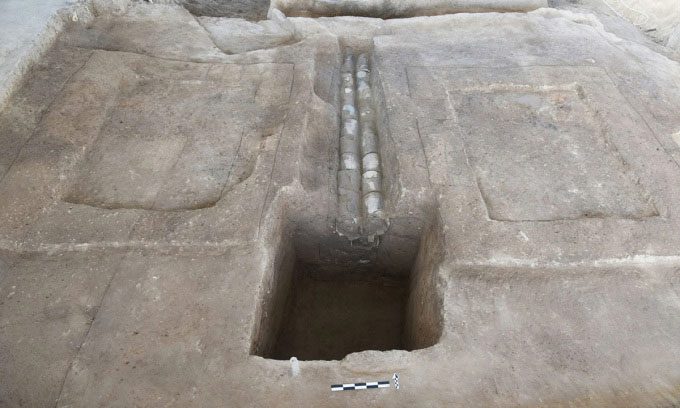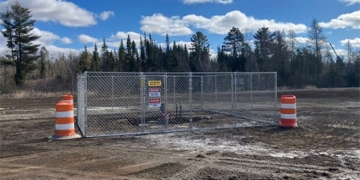Archaeologists Discover China’s Oldest Ceramic Water Pipe System, Showcasing the Advanced Technical Skills of Ancient Peoples.
The newly discovered water pipe system dates back to the Longshan period (approximately 2600 – 2000 BC), demonstrating that ancient peoples were capable of creating complex engineering structures without centralized authority. The research was published in the journal Nature Water on August 14.

The pipe leading to the drainage ditch near the southern gate of Pingliangtai. (Photo: Yanpeng Cao).
The newly discovered ceramic water pipes and drainage ditches are located in the ancient city of Pingliangtai, which today is part of Huaiyang District, Zhukou City, Henan Province, central China. Pingliangtai was home to around 500 people during the Neolithic period, characterized by protective walls and surrounding moats.
4,000 years ago, this area experienced significant seasonal climate changes. The summer monsoon could bring up to 45 cm of rainfall to the region each month. With such rainfall, flood control was crucial for Pingliangtai.
The inhabitants of Pingliangtai constructed and operated a two-tier drainage system to manage the excess water during the rainy season. The simple drainage ditches worked efficiently together, running parallel to residential areas to channel water from the homes into ceramic drainage pipes. These pipes then directed the water to the surrounding moat, away from the residential areas.
The ceramic water pipes also showcase advanced technical skills dating back 4,000 years. They feature various decorative styles, but each pipe segment has a diameter of approximately 20 – 30 cm and a length of 30 – 40 cm. Many segments were fitted together to transport water over longer distances. The research team stated that this is the most complete and ancient ceramic water pipe system ever recorded in China.
“The discovery of the ceramic pipe system is remarkable because it shows that the people of Pingliangtai were able to build and maintain such an advanced water control system using Stone Age tools without requiring a centralized power organization. The system necessitated a high level of community planning and coordination,” co-author Yijie Zhuang, an archaeologist at University College London, stated.
“Pingliangtai is an extraordinary site. The water pipe system reflects extensive knowledge of engineering and hydrology that was previously thought to exist only in societies with clearer hierarchical structures,” co-author Hai Zhang, an archaeologist at Peking University, noted.




















































